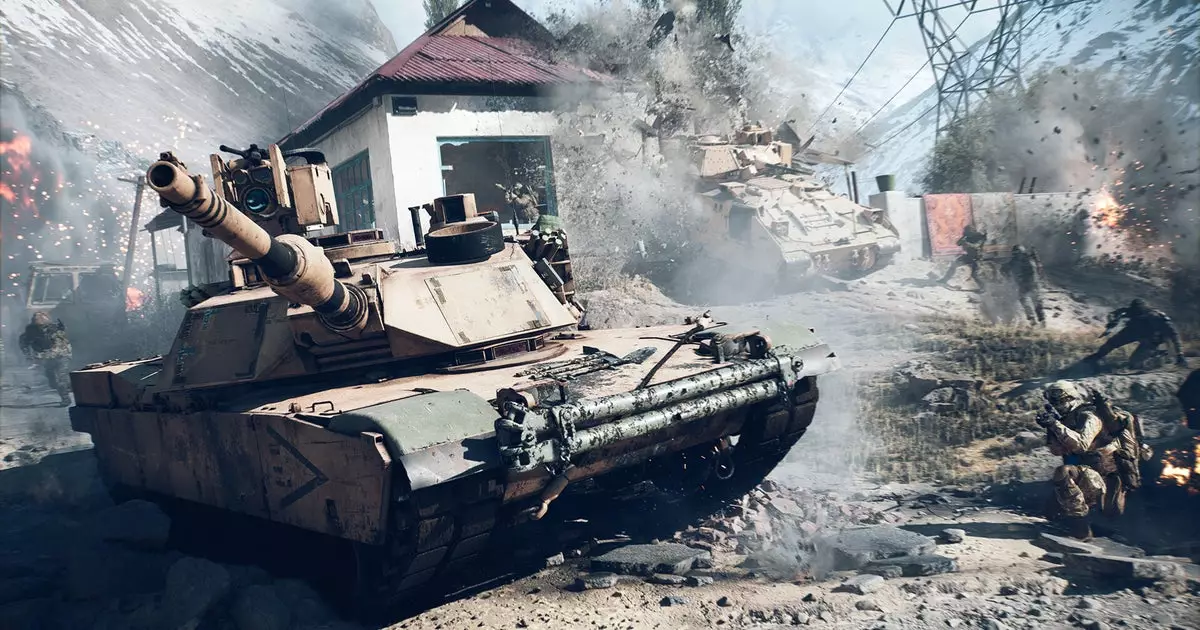In the realm of multiplayer shooters like Battlefield, the difference between a commanding vehicle and an aimless lumbering beast can define the entire gameplay experience. The stark contrast between AI-driven tanks that glide with mastery and those operated by players who seem to handle them like fragile sweets underscores the intricate challenge of game balancing. It’s not merely a matter of individual skill, but a reflection of how developers tune physics, damage models, and gameplay flow to craft a satisfying, competitive environment. When tanks and helicopters feel invincible—yet the moment players step into them, they handle like shopping carts—there’s a disconnect that hampers immersion and strategic depth. This is especially evident in the aftermath of the Battlefield 6 beta, where vehicle durability and responsiveness became a focal point of critique.
The Ongoing Dance of Balance Adjustment
The information shared by Battlefield 6’s lead producer, David Sirland, offers an honest glimpse into the complex world of game balancing. His acknowledgment that vehicles are “squishy” in the beta points to a deliberate design choice—possibly an intentional underpowering meant to prevent early dominance and ensure a fair environment for players of all skill levels. This approach, while seemingly counterintuitive for experienced players craving a more impactful vehicle experience, aims to create a foundational baseline. Developers often prefer to start with vehicles that are too weak rather than overpowering; it’s an initial step, allowing iterative tuning based on community feedback and observed gameplay patterns.
The notion that developers might anticipate future player evolution is especially compelling. They seem to be designing with a long-term horizon—understanding that as players become more familiar with mechanics, their strategies will evolve. This foresight, however, is fraught with risk. Balancing for future skill levels involves predicting player ingenuity, which is inherently unpredictable. If the vehicles are too weak at launch, frustration could set in; too powerful, and gameplay risks becoming stale or unbalanced. Striking this delicate equilibrium is a perpetual challenge that not only tests technical prowess but also the patience and adaptability of the player community.
Vehicle Sponginess: A Balancing Conundrum
One of the most thought-provoking aspects of the beta was the variability in vehicle resilience—vehicles that felt shockingly fragile at times versus moments where they seemed resilient beyond logic. EA’s acknowledgment that future maps will introduce more vehicle-centric gameplay suggests an ongoing probe into this balancing act. For players, the unpredictability of vehicle endurance can be both exhilarating and frustrating. It forces a reconsideration of tactics: when to engage, when to retreat, and how to capitalize on or mitigate vehicle vulnerabilities.
This inconsistency raises questions about the underlying design philosophy. Is it better to have vehicles that are clearly powerful but fragile, or to have tanks that feel like unstoppable fortresses? The answer isn’t straightforward. A “spongy” tank might encourage more cautious play, fostering team coordination and strategic positioning. Conversely, a heavily armored vehicle that dominates could lead to stagnation and repeated frustrations if opponents lack the tools to counter it effectively. The shuffling balance between these extremes seems to be an ongoing deliberation, driven by feedback, data, and the developers’ vision for engaging combat.
The Deeper Implication: Balancing for Human Nature and Future Playstyles
What strikes me most about these balancing challenges is the possible strategic reasoning behind initially underwhelming vehicle power. By intentionally shipping vehicles that are balanced on the weaker side, developers might be trying to mirror the unpredictability of real warfare, or perhaps to encourage diversity in playstyles. It could be an effort to prevent the game from turning into a vehicular “rock-paper-scissors” arena, where some weapons consistently dominate others. This deliberate underpowering might be a nuanced masterstroke to push players towards complex, multi-layered tactics.
Moreover, there’s an element of psychological preparedness involved. If vehicles start out seeming underwhelming, players aren’t discouraged by early failures. Instead, they’re primed to adapt, learn, and eventually master the mechanics as they evolve through updates. However, if this strategy misfires and vehicles remain unwieldy or ineffective, it risks alienating core fans who crave a more visceral, impactful vehicular experience. Developers walk a fine line—balancing immediate fun with long-term engagement, trying to shape a universe where each update refines the chaos into something more cohesive.
The ongoing balancing act in Battlefield exemplifies the challenging interplay between technical design, player psychology, and evolving gameplay. While frustration with vehicle handling is understandable, it also reflects a deep commitment from developers to craft a dynamic battlefield—one that adapts, evolves, and finally achieves the harmony needed for truly compelling multiplayer warfare.

